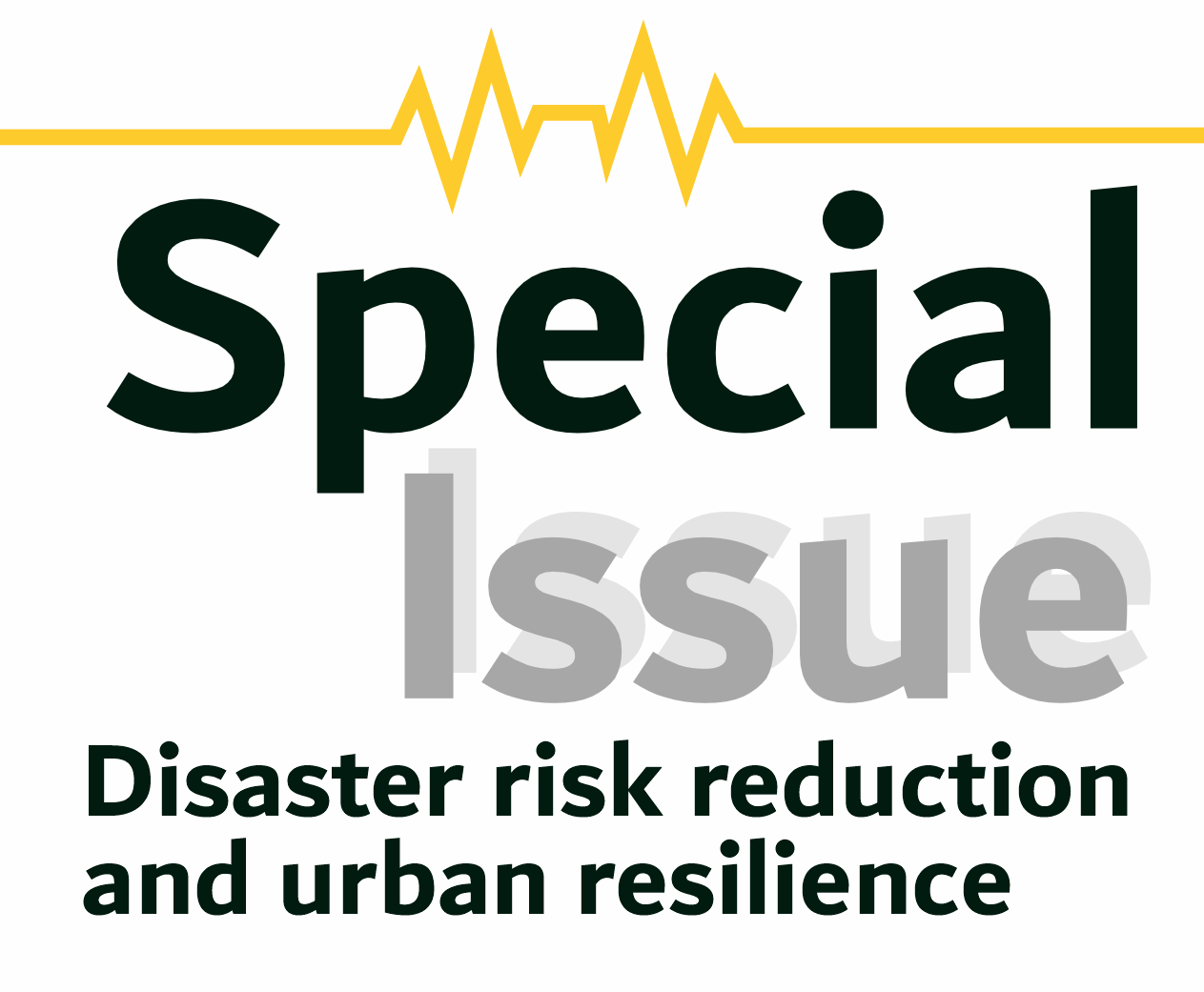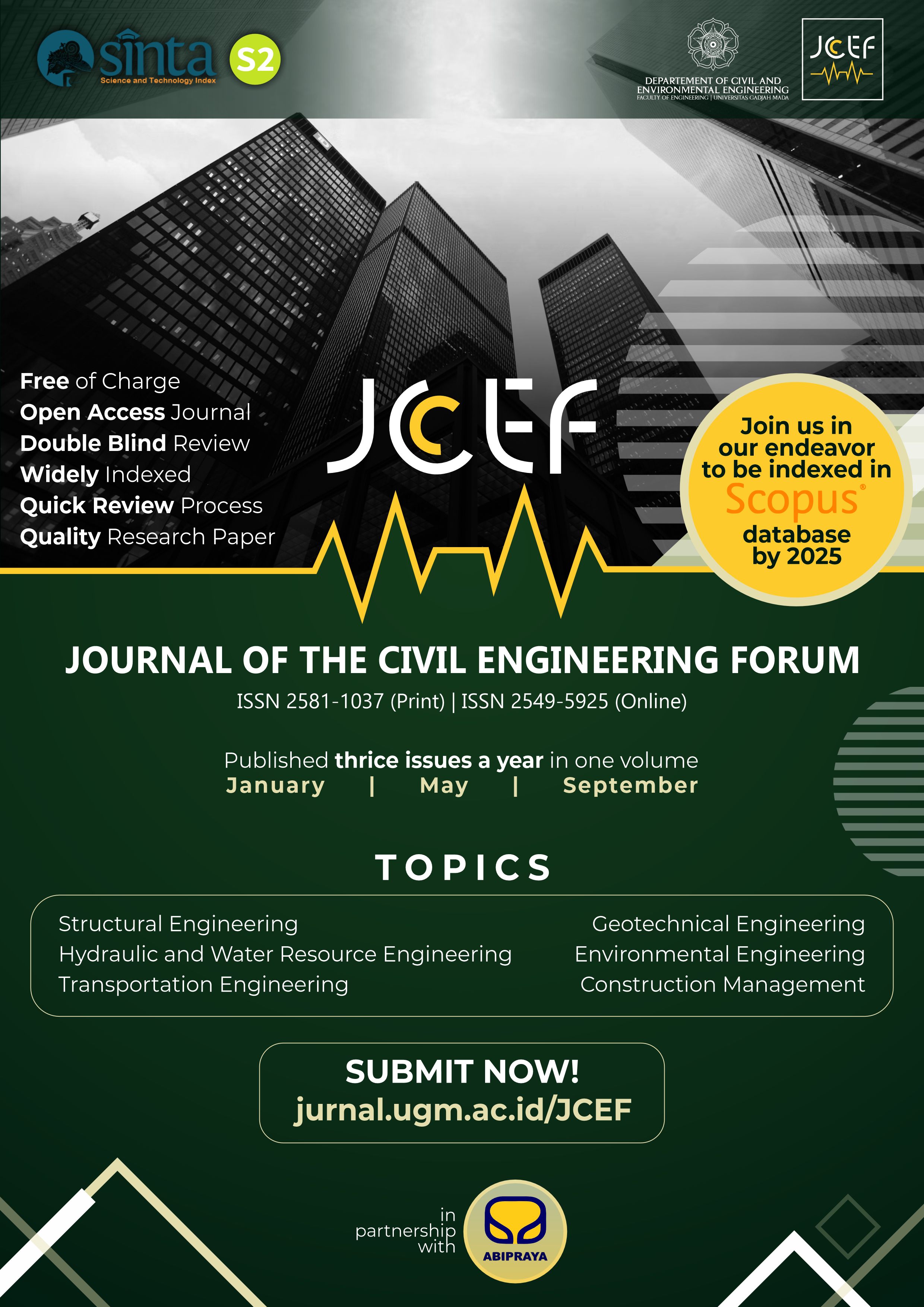Airfield Asphalt Overlay Design for Non-conventional Pavement Structures: A Case Study of Airport in Indonesia
Abstract
Airfield pavements begin a gradual deterioration from several sources, including traffic load and environmental conditions. To achieve its intended design life, routine maintenance, repair, and rehabilitation should be performed. There are considerable research and studies conducted on the design and practice of pavements rehabilitation/overlay for typical airfield pavements. However, most of the existing guidelines and studies are only suitable for pavements with conventional structures. There has been no detailed investigation into the practice of airfield asphalt overlay for non-conventional pavement structures, such as chicken claw /Cakar Ayam pavement system and nailed-slab system. In the present article, challenges and issues for airfield asphalt overlay design for non-conventional pavement structures were examined based on an actual runway rehabilitation project in one of the major airports in Indonesia in 2015. The overlay design procedure, the evaluation of the existing pavement condition, including visual surveys and deflection tests, and the pre-overlay treatments were also discussed. In addition, a finite element (FE) simulation to model the non-conventional pavement structure was developed to calculate the required overlay thickness. The result showed that, during the overlay design of non-conventional pavement structure, data from falling weight deflectometer (FWD) could not be directly used to estimate the back-calculated layers moduli because of the difference in the geometric features of the pavement structure. Moreover, the FE model can be a robust tool to simulate the complex three-dimensional geometric features of a non-conventional pavement and important loading conditions, such as interface shear bond of overlay, that are usually not available in other tools, such as FAARFIELD. Finally, this study showed that the additional asphalt overlay could reduce the fatigue stress at the bottom of the existing slab and vertical stress at the top of the subgrade, resulting in overall smaller stress levels
References
Airplanes, B. C. (2015), ‘777-200lr/-300er/-freighter airplane characteristics for airport planning, document number d6-58329-2’, URL http://www.boeing.com/assets/pdf/commercial/airports/acaps/777_2lr3er.pdf.
Arabali, P., Sakhaeifar, M. S., Freeman, T. J., Wilson, B. T. and Borowiec, J. D. (2017), ‘Decisionmaking guideline for preservation of flexible pavements in general aviation airport management’, Journal of Transportation Engineering, Part B: Pavements 143(2), 04017006.
ASTM (2012), ‘Standard test method for airport pavement condition index surveys’.
Brill, D. and Kawa, I. (2017), Advances in faa pavement thickness design software: Faarfield 1.41, in ‘Airfield and Highway Pavements 2017’, pp. 92–102.
Collop, A. (2000), ‘The effect of asphalt layer thickness variations on pavement evaluation using the falling weight deflectometer’, International Journal of Pavement Engineering 1(4), 247–263.
Dhakal, N., Elseifi, M. A. and Zhang, Z. (2016), ‘Mitigation strategies for reflection cracking in rehabilitated pavements–a synthesis’, International Journal of Pavement Research and Technology 9(3), 228–239.
FAA (2006), ‘Standardized method of reporting airport pavement strength-pcn, 150/5335-5a’, Advisory Circular, Federal Aviation Administration.
FAA (2021), ‘Airport pavement design and evaluation, ac 150/5320-6g’, Advisory Circular, Federal Aviation Administration.
Gary, C., Leigh, W. and Michael, H. (2016), ‘Airfield pavement design for a major airport using FAARFIELD and APSDS’.
Loizos, A., Armeni, A. and Plati, C. (2017), Evaluation of airfield pavements using FAARFIELD, in ‘Airfield and Highway Pavements 2017’, pp. 82–91.
Ma, H. and Zhang, Z. (2020), ‘Paving an engineered cementitious composite (ecc) overlay on concrete airfield pavement for reflective cracking resistance’, Construction and Building Materials 252, 119048.
Mohammad, L., Elseifi, M., Bae, A., Patel, N., Button, J. and Scherocman, J. (2012), ‘Nchrp report 712: optimization of tack coat for hma placement’, Transportation Research Board of the National Academies, Washington, DC .
O’Massey, R. (1978), ‘Aircraft pavement loading: Static and dynamic’, Transportation Research Board Special Report (175).
Pierce, L. M. and Mahoney, J. P. (1996), ‘Asphalt concrete overlay design case studies’, Transportation
research record 1543(1), 3–9.
Puri, A. (2018), Differentiation of displacement factor for stiff and soft clay in additional modulus of subgrade reaction of nailed-slab pavement system, in ‘Proceedings of the Second International Conference on the Future of ASEAN (ICoFA) 2017– Volume 2’, Springer, pp. 927–933.
Rahman, T., Christady, H., Sartono, W. and Suhendro, B. (2015), Evaluation of bearing capacity and pcn of north runway cakar ayam system in soekarno-hatta international airport using finite element modelling (case study: to operate the b777-300er aircraft).
Rahman, T., Dawson, A. and Thom, N. (2019), The permissible temperature of newly laid asphalt at opening to airfield traffic, in ‘Bituminous Mixtures and Pavements VII’, CRC Press, pp. 365–374.
Rahman, T., Dawson, A., Thom, N., Ahmed, I. and Carvajal-Munoz, J. S. (2020), ‘Determining the allowable opening-to-traffic asphalt temperature for airport pavements’, International Journal of Pavement Engineering pp. 1–19.
Setiawan, D. M. (2020), ‘The role of temperature differential and subgrade quality on stress, curling, and deflection behavior of rigid pavement’, Journal of the Mechanical Behavior of Materials 29(1), 94–105.
Shahin, M. Y. (2005), Pavement management for airports, roads, and parking lots.
Sørensen, A. and Hayven, M. (1982), The dynatest 8000 falling weight deflectometer test system, in ‘Proceedings of a International Symposium on Bearing Capacity of Roads and Airfields, Volume 1, Trondheim held June 23-25, 1982.’.
Suhendro, B. (2006), ‘Sistem cakar ayam modifikasi sebagai alternatif solusi konstruksi jalan di atas tanah lunak’.
Suhendro, B. (2018), Modified chicken claw (cakar ayam modifikasi) system-a new concept in green pavement technology over soft and swampy ground, in ‘Applied Mechanics and Materials’, Vol. 881, Trans Tech Publ, pp. 106–121.
Thom, N. et al. (2013), Principles of pavement engineering, Thomas Telford London.
Trevino, M., Dossey, T., McCullough, B. F. and Yildirim, Y. (2003), ‘Applicability of asphalt concrete overlays on continuously reinforced concrete pavements’, Center for Transportation Research, University of Texas at Austin .
Wang, H., Li, M. and Garg, N. (2016), ‘Investigation of shear failure in airport asphalt pavements under aircraft ground manoeuvring’, Road Materials and Pavement Design 18(6), 1288–1303.
White, G. (2016), ‘Shear stresses in an asphalt surface under various aircraft braking conditions’, International
Journal of Pavement Research and Technology 9(2), 89–101.
Zhao, Z., Guan, X., Xiao, F., Xie, Z., Xia, P. and Zhou, Q. (2020), ‘Applications of asphalt concrete overlay on portland cement concrete pavement’, Construction and Building Materials 264, 120045.
Copyright (c) 2022 The Author(s)

This work is licensed under a Creative Commons Attribution-ShareAlike 4.0 International License.
Copyright is granted to authors for the purpose of providing protection for articles written to describe experiments and their results. JCEF will protect and defend the work and reputation of the author and are also willing to address any allegations of violation, plagiarism, fraud, etc. against articles written and published by JCEF. JCEF is published under the terms of the Creative Commons Attribution-ShareAlike 4.0 International License (CC BY-SA 4.0). The author holds the copyright and assigns the journal rights to the first publication (online and print) of the work simultaneously.





